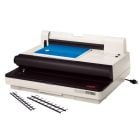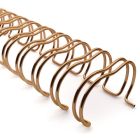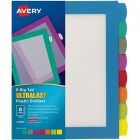School Projects - Creating Books
Creating books in class is a fun and engaging class project, and gives your students something they can keep forever. Here are a few tips on how to get started.
Picking a Theme:
Before you get to putting a book together, the first thing you will have to decide is what you want your students' books to be about. Fortunately, there pretty much countless projects in just about all of the major disciplines that you can successfully create books around. In the English department, for instance, you can put together books of your students' writing work, either individually or collectively. Your history class can create a book about a major event such as the Civil War. Even the science-based classes can make books out of field studies and findings from various experiments the class has undertaken.
Gathering Your Material:
As mentioned above, there are at least a couple of different ways to go about putting your book together. For instance, your book can either represent the work of the whole class, or of each individual student. In the former case, you can assign various tasks to each student that will represent his or her contribution to the final product. This is a great way to impart the lesson of working together to create something of value, and of setting and meeting deadlines. You can also create a separate book for each individual student that represents his or her work throughout the school year, or for a particular learning section. Some other options include creating department-wide books, such as cookbooks for home economics classes, poems and stories from the creative writing classes, drawings and paintings from the art department, and the list goes on.
The Project:
When you are putting your book together, unless you intend the books to be your own project as, for instance, surprise gifts to your students, it will provide them a great learning experience if they are involved in every aspect of the work from inspiration, to creation, to the finished product. If your class were to, say, take a vote on what kind of book they would like to create, it stands to reason that they will be more engaged in the process and be more likely to follow through.
Just like with any book, there should be a good mix of text and graphics. If it is some kind of science or business study, for instance, there should be at least some photographs and/or charts and graphs.
For younger students, you may want to create a template that each student can work with, such as a place to put a photo, and lines to fill in.
Printing and Binding Options:
There are numerous options, of course, but if you are using color in your graphics, you will want to use a color printer if your school has one. As far as binding, you can take a look at what kinds of machines your school has on hand. Chances are there will be a plastic comb binding machine, or perhaps even spiral coil unit. These are both great options and very useful to have around, so if your school is lacking one, it might be a good thing to request. You might also check with your library to see if they have a thermal binding machine. These machines can create hardcover books in a matter of minutes, and are very inexpensive.









